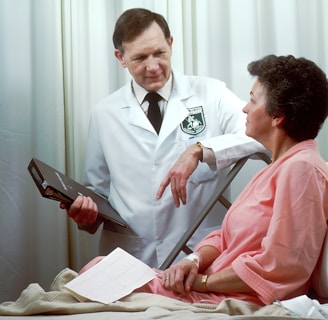California Department of Public Health: Must-Have Documents Before the State Walks In
Prepare your California home health agency for unannounced CDPH surveys with this essential guide to required documents, compliance tips, and CMS-aligned readiness strategies


A Home Health Agency’s Guide to Survey Preparedness Based on CMS Protocols
When the California Department of Public Health (CDPH) or any CMS-authorized entity walks into your home health agency (HHA) unannounced, it’s not the time to begin organizing your documentation—it’s the time to shine. The survey process is rigorous, patient-focused, and outcome-driven, designed to evaluate whether your agency is in compliance with Medicare’s Conditions of Participation (CoPs) as outlined in CMS’s State Operations Manual (SOM) Appendix B.
To ensure a smooth, efficient survey and avoid deficiencies—or worse, condition-level citations—it is crucial that your agency has the essential documents ready and accessible before surveyors arrive.
Why Being Prepared Matters
A survey can result in a range of outcomes, from full certification to termination, depending on your agency’s level of compliance. CDPH uses survey protocols that mirror CMS’s guidance, focusing on both documentation and direct care to assess whether your agency delivers safe, effective, and coordinated services.
Noncompliance—especially at the condition level—can have serious consequences including mandatory corrective action plans, monetary penalties, or revocation of Medicare certification.
The Top Must-Have Documents—No Exceptions
1. Organizational and Administrative Readiness
Current organizational chart and administrator designation
Updated Form CMS-1572, Home Health Agency Survey Report
List of all parent and branch locations, including services offered
2. Personnel and Staffing
Roster of all direct and contracted staff, including:
Job titles and responsibilities
Dates of hire and licensure verification
Home health aide competency evaluations and in-service training logs
Documentation of staff assigned to clinical supervision and emergency roles
3. Clinical Records and Patient Care
Complete, current clinical records for active and recently discharged patients (last 6 months), including:
Comprehensive assessments
Plan of care
Medication profiles
Progress and visit notes
Schedule of home visits during the week of survey
A list of patients receiving specialized services (e.g., wound care, IV therapy)
4. Emergency Preparedness Documentation
Emergency Preparedness Plan
Staff training records on emergency protocols
Drill documentation and corrective actions taken
5. Quality Assurance and Performance Improvement (QAPI)
Documentation of QAPI activities and improvement projects
Infection prevention and control reports, including staff education logs
6. Complaint and Abuse Logs
Complete and updated complaint log
Abuse tracking log (even if no incidents have occurred)
Policies on abuse reporting and staff training documentation
7. Patient Rights and Disclosures
Admission packet given to patients, including:
Patient rights and responsibilities
Notice of privacy practices
Information on service limitations and financial responsibility
What Surveyors Look for
Surveyors don’t just look at documentation—they triangulate findings from:
Clinical record reviews
Observations during home visits
Interviews with staff, patients, and caregivers
They assess how well your written policies translate into actual practice. Therefore, alignment between documentation and field practice is non-negotiable.
Survey Types to Expect
CDPH may conduct different types of surveys, each with specific documentation needs:
Initial Certification Survey
Verifies compliance with all CoPs before enrollment.Recertification Survey
Conducted every 36 months to renew certification.Complaint Investigation
Triggered by external complaints; documentation supporting investigation and resolution is essential.Post-Survey Revisit
Evaluates correction of prior deficiencies; keep corrective action plans and supporting evidence ready.Extended Survey
Initiated when substandard care is identified. All CoPs may be reviewed.
Special Notes for California Agencies
California-specific considerations include:
Maintaining compliance with state licensing regulations in addition to federal CoPs
Ensuring branch locations are approved and listed correctly on Form CMS-1572
Being transparent during surveys, but avoid providing extraneous materials unless requested
Final Thoughts: Your Pre-Survey Strategy
Preparation is ongoing. Agencies should:
Perform internal audits and mock surveys regularly
Maintain updated documentation binders
Designate a survey readiness team responsible for document collection and coordination during surveys
Practice real-time compliance—not just "paper compliance"
Conclusion
A surprise visit from the California Department of Public Health doesn’t have to be a nightmare. With the right documents in place and a culture of continuous readiness, your home health agency can confidently demonstrate compliance, protect your Medicare certification, and—most importantly—prove your commitment to high-quality patient care.


